ID 627576
Lot 86 | Xiangyangfu Tu [Map of Xiangyang Prefecture]
Estimate value
$ 7 000 – 10 000
Rare, large manuscript map of Xiangyang, a strategic site on the middle reaches of the Han River, witness to several major battles in Chinese history. The map depicts the river systems of Xiangyang Prefecture and the seven administrative districts under its jurisdiction, orientated with the north at the bottom. The prefecture seat (fuzhi) of Xiangyang is located in Xiangyang county, depicted slightly to the left of the map’s center, enclosed by city walls with gates and towers. The wide meandering waterway passing from the north to the east of Xiangyang Prefecture is the Han River, the longest tributary of the Yangtze River. The other five counties under the control of Xiangyang Prefecture are depicted as blue rectangular borders and Jun Prefecture, also an area under Xiangyang’s jurisdiction, represented by a blue ring. Xiangyang served a prominent historical role in ancient China. In 827 BCE, King Xuan of Zhou (841-782 BCE) granted the land at the north bank of the Han River and the surname Fan to Zhong Shanfu. This area, the origin of Xiangyang, was thereafter named Fan City, portrayed in the map as a light brown semicirclar city wall, facing the Xiangyang Prefecture on the opposite bank of the Han River. During the Three Kingdoms Period (220-280), the Battle of Fan City was fought between the warlords Liu Bei (161-223) and Cao Cao (155-220), and the famous event, the “drowning of Cao Cao’s seven armies (shui yan qijun),” was planned by General Guan Yu (160-220) at Fan City.
Today, Xiangyang is the third most populated city of the province, with almost 6 million residents. The visual elements of the present lot are comparable to Map of Levee Repairs in Hubei Province dated to Daoguang period (1821-1850) in the collection of the Geography and Map Division, Library of Congress, and Map of Jingzhou Prefecture, Huguang Province dated to early Qing in the collection of the National Palace Museum, Taipei. The fact that these three maps depict geographically close areas suggest that the pictorial style of cartography may have regional traditions that passed down through generations. Reference: Kuo-Hsin Hsieh & Ralph E. Ehrenberg, Reading Imperial Cartography: Ming-Qing Historical Maps in the Library of Congress (2013), pp. 274.
Manuscript map of Xiangyang Prefecture, ink and colors on paper, approximately 625 x 855mm. The four orientations noted on the four margins, with the north at the bottom. All elements outlined in ink, rivers colored in green, prefectures and counties represented by blue rectangular or circular bands, ancient cities colored in light brown. Boundaries between counties are noted with a symbol of a blue stele. Villages and towns are represented by single houses, annotated with Chinese names and their distance mileage to the nearest counties. Mountains are drawn as horizontally layered triangles, with blue outlines and green marks representing vegetations, a beige middle band and a green core. Along the four margins, the distance mileage to counties of the neighboring prefectures are annotated. Text in Chinese. Very good condition with vivid colors (paper lightly toned, some wears and wormholes along centerfold and at fold intersections, centerfold and some edges reinforced on verso, the bottom margin with some very light spotting. Float-mounted and fromaed (unexamined out of frame).
Please note that this lot is subject to an import tariff. If the buyer instructs Christie’s to arrange shipping of the lot to a foreign address, the buyer will not be required to pay the import tariff. If the buyer instructs Christie’s to arrange shipping of the lot to a domestic address, if the buyer collects the property in person, or if the buyer arranges their own shipping (whether domestically or internationally), the buyer will be required to pay the import tariff. Please contact Post Sale Services on +1 212 636 2650 prior to bidding for more information.
| Artist: | William Shakespeare (1564 - 1616) |
|---|---|
| Applied technique: | Pencil |
| Artist: | William Shakespeare (1564 - 1616) |
|---|---|
| Applied technique: | Pencil |
| Address of auction |
CHRISTIE'S 8 King Street, St. James's SW1Y 6QT London United Kingdom | |
|---|---|---|
| Preview |
| |
| Phone | +44 (0)20 7839 9060 | |
| Buyer Premium | see on Website | |
| Conditions of purchase | Conditions of purchase |
![Shakespeare, William. Xiangyangfu Tu [Map of Xiangyang Prefecture] - photo 1 Shakespeare, William. Xiangyangfu Tu [Map of Xiangyang Prefecture] - photo 1](/assets/image/picture_1696431/f6191/60ef62d03130123a63c44dd3735a5c031633096800jpg__fix_555_460.jpeg)
![Shakespeare, William. Xiangyangfu Tu [Map of Xiangyang Prefecture] - photo 1 Shakespeare, William. Xiangyangfu Tu [Map of Xiangyang Prefecture] - photo 1](/assets/image/picture_1696431/65f7e/60ef62d03130123a63c44dd3735a5c031633096800jpg__fix_160x160.jpeg)

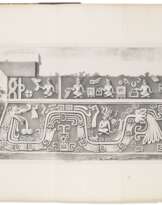
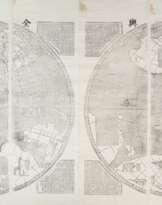
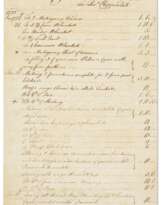
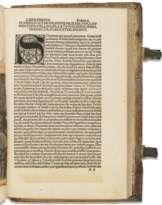
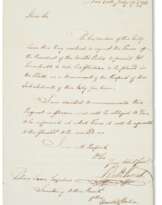
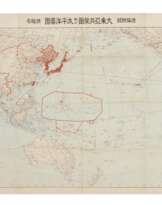
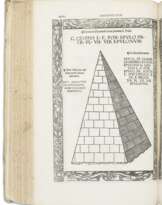
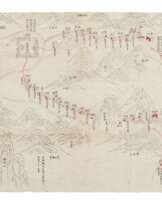
![Shakespeare, William. Xiangyangfu Tu [Map of Xiangyang Prefecture] - photo 1 Shakespeare, William. Xiangyangfu Tu [Map of Xiangyang Prefecture] - photo 1](/cache/lot/627576/60ef62d03130123a63c44dd3735a5c03_1633096800-80x80_center_50.jpg)
